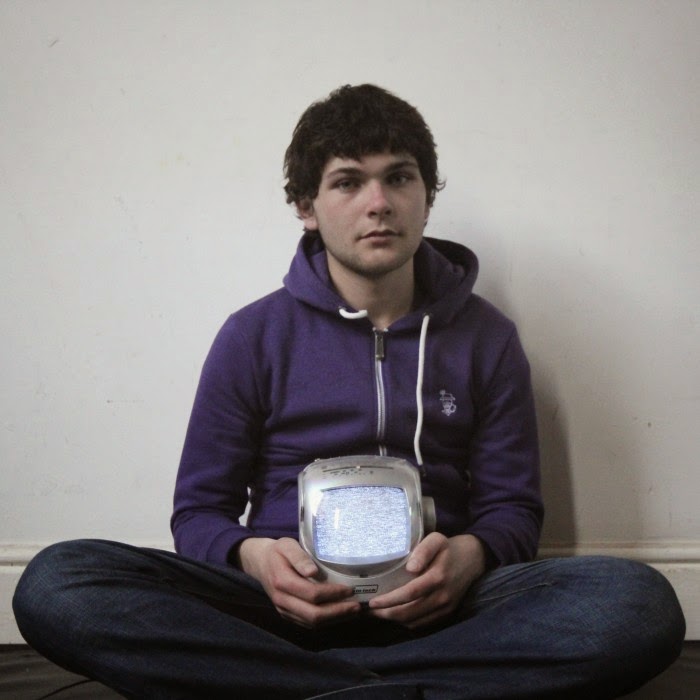'Static' review or 'Should we try switching on and off?'
Static, New Model Theatre
New Diorama Theatre, 19th
May 2014
A young lad sits on a pixelated
floor, the black patterns fading into white. Two white frames hang above him,
splashed with just a hint of grey fuzz from the TV. White noise buzzes in the
background. This is a lad whose childhood has been made up of live TV feeds and
24 hour news coverage. Jon Snow’s voice rattles about in his head and, when he switches
on the TV, he sees only himself. The divide between the real-world and the TV
world is getting perilously thin.
There’s some seriously juicy
and topical stuff going on in one-man play ‘Static’, which is written and
directed by Tom Nicholas of New Model Theatre. What happens when your childhood
is framed by the TV and you are more accustomed to seeing life played out on
screen than outside your window? When I was young, I was more interested in my
own make-believe world than anyone else’s. I’m not convinced that’s the case
for today’s children and it is interesting and frightening to think how this
constant exposure to TV and reported global events might be warping the younger
generation’s hold on reality and sense of self.
This is a thoughtfully constructed
show and the design, in particular, creates a really useful loop back to the
play’s central themes. The use of those two hanging frames – on which news
feeds, memories and re-enacted scenarios are frequently projected – is highly effective.
Top marks to videographer Jon Broks and designer Nina Raines who have come up
with this probing concept. The hanging frames recall an art gallery and remind
us that TV is today’s premiere medium for creative expression. It is where today’s
young adults hope to see their lives and concerns reflected. It is where they
look for inspiration and self-affirmation.
In another clever twist, most
of the news clips are performed by the show’s one actor, Sam Skuse. This visual
doubling taps into the narcissism engendered by a life spent in front of the TV
or computer screen and the strangely narrowing effect such over-exposure can
have. You would think that the global access the TV and internet provides might
expand people’s imaginations but this little visual trick, which sees the young
boy reflected in every TV clip he watches, suggests how such exposure might
trap a young mind in a limited (and potentially dangerous) world entirely of
his or her own creation.
So, when war is declared in
Iraq, it is the young boy who delivers the declaration. When terrorists release
a video following the 7/7 bombings, it is the boy who utters the extremist’s chilling
message. Later, when the boy plucks up the courage to attend a ‘real-life’
party, he talks to a projected video of a girl, again played by himself. Wherever
he looks the boy sees himself staring back at him, challenging him to live a bigger
and better life, worthy of the small screen.
The show does lose its way a
little as the story opens out. The script starts to feel a tad indulgent as the
writer patiently tracks through the key events in this young lad’s life. It’s
all a bit Adrian Mole, the technological years. Nevertheless this is a highly
stimulating production which, with some careful editing, could turn into an excellent
prime-time show.



Comments
Post a Comment